Dynamic 1D search and processive nucleosome translocations by RSC and ISW2 chromatin remodelers
- PMID: 38497611
- PMCID: PMC10948146
- DOI: 10.7554/eLife.91433
Dynamic 1D search and processive nucleosome translocations by RSC and ISW2 chromatin remodelers
Abstract
Eukaryotic gene expression is linked to chromatin structure and nucleosome positioning by ATP-dependent chromatin remodelers that establish and maintain nucleosome-depleted regions (NDRs) near transcription start sites. Conserved yeast RSC and ISW2 remodelers exert antagonistic effects on nucleosomes flanking NDRs, but the temporal dynamics of remodeler search, engagement, and directional nucleosome mobilization for promoter accessibility are unknown. Using optical tweezers and two-color single-particle imaging, we investigated the Brownian diffusion of RSC and ISW2 on free DNA and sparse nucleosome arrays. RSC and ISW2 rapidly scan DNA by one-dimensional hopping and sliding, respectively, with dynamic collisions between remodelers followed by recoil or apparent co-diffusion. Static nucleosomes block remodeler diffusion resulting in remodeler recoil or sequestration. Remarkably, both RSC and ISW2 use ATP hydrolysis to translocate mono-nucleosomes processively at ~30 bp/s on extended linear DNA under tension. Processivity and opposing push-pull directionalities of nucleosome translocation shown by RSC and ISW2 shape the distinctive landscape of promoter chromatin.
Keywords: ISW2; RSC; chromatin remodelers; chromosomes; gene expression; molecular biophysics; none; optical tweezers; single molecule; structural biology; target search.
© 2023, Kim, Carcamo et al.
Conflict of interest statement
JK, CC, SJ, ZX, XF, MY, MP, KH, TH, CW No competing interests declared, JG US Patent 11,091,643 describing deuterated fluorophores and variant compositions are assigned to HHMI, LL Founder and shareholder of Eikon Therapeutics. US Patent 11,091,643 describing deuterated fluorophores and variant compositions are assigned to HHMI
Figures
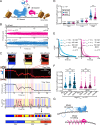
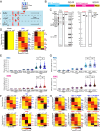
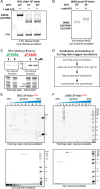
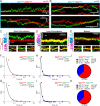

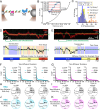
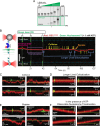

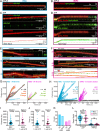
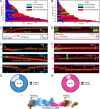
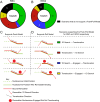
Update of
-
Dynamic 1D Search and Processive Nucleosome Translocations by RSC and ISW2 Chromatin Remodelers.bioRxiv [Preprint]. 2024 Jan 15:2023.06.13.544671. doi: 10.1101/2023.06.13.544671. bioRxiv. 2024. Update in: Elife. 2024 Mar 18;12:RP91433. doi: 10.7554/eLife.91433. PMID: 38293098 Free PMC article. Updated. Preprint.
Similar articles
-
Dynamic 1D Search and Processive Nucleosome Translocations by RSC and ISW2 Chromatin Remodelers.bioRxiv [Preprint]. 2024 Jan 15:2023.06.13.544671. doi: 10.1101/2023.06.13.544671. bioRxiv. 2024. Update in: Elife. 2024 Mar 18;12:RP91433. doi: 10.7554/eLife.91433. PMID: 38293098 Free PMC article. Updated. Preprint.
-
The chromatin remodelers RSC and ISW1 display functional and chromatin-based promoter antagonism.Elife. 2015 Mar 30;4:e06073. doi: 10.7554/eLife.06073. Elife. 2015. PMID: 25821983 Free PMC article.
-
Basis of specificity for a conserved and promiscuous chromatin remodeling protein.Elife. 2021 Feb 12;10:e64061. doi: 10.7554/eLife.64061. Elife. 2021. PMID: 33576335 Free PMC article.
-
Interplay among ATP-Dependent Chromatin Remodelers Determines Chromatin Organisation in Yeast.Biology (Basel). 2020 Jul 25;9(8):190. doi: 10.3390/biology9080190. Biology (Basel). 2020. PMID: 32722483 Free PMC article. Review.
-
Establishing nucleosome architecture and stability at promoters: Roles of pioneer transcription factors and the RSC chromatin remodeler.Bioessays. 2017 May;39(5). doi: 10.1002/bies.201600237. Epub 2017 Mar 27. Bioessays. 2017. PMID: 28345796 Review.
Cited by
-
Structures of H2A.Z-associated human chromatin remodelers SRCAP and TIP60 reveal divergent mechanisms of chromatin engagement.bioRxiv [Preprint]. 2024 Jul 30:2024.07.30.605802. doi: 10.1101/2024.07.30.605802. bioRxiv. 2024. PMID: 39131301 Free PMC article. Preprint.
-
The voyage is as important as the harbor.Elife. 2024 Mar 15;13:e96836. doi: 10.7554/eLife.96836. Elife. 2024. PMID: 38488335 Free PMC article.
-
Molecular basis of global promoter sensing and nucleosome capture by the SWR1 chromatin remodeler.Cell. 2024 Nov 27;187(24):6849-6864.e18. doi: 10.1016/j.cell.2024.09.007. Epub 2024 Oct 1. Cell. 2024. PMID: 39357520
-
ATP-dependent remodeling of chromatin condensates uncovers distinct mesoscale effects of two remodelers.bioRxiv [Preprint]. 2024 Sep 10:2024.09.10.611504. doi: 10.1101/2024.09.10.611504. bioRxiv. 2024. PMID: 39314305 Free PMC article. Preprint.
-
Dependence of nucleosome mechanical stability on DNA mismatches.Elife. 2024 Apr 24;13:RP95514. doi: 10.7554/eLife.95514. Elife. 2024. PMID: 38656237 Free PMC article.
References
-
- Badis G, Chan ET, van Bakel H, Pena-Castillo L, Tillo D, Tsui K, Carlson CD, Gossett AJ, Hasinoff MJ, Warren CL, Gebbia M, Talukder S, Yang A, Mnaimneh S, Terterov D, Coburn D, Li Yeo A, Yeo ZX, Clarke ND, Lieb JD, Ansari AZ, Nislow C, Hughes TR. A library of yeast transcription factor motifs reveals A widespread function for Rsc3 in targeting nucleosome exclusion at promoters. Molecular Cell. 2008;32:878–887. doi: 10.1016/j.molcel.2008.11.020. - DOI - PMC - PubMed
MeSH terms
Substances
Associated data
Grants and funding
LinkOut - more resources
Full Text Sources

